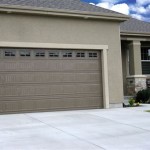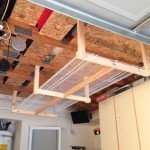How To Finish Concrete In A Garage
A smooth, durable, and aesthetically pleasing concrete floor significantly enhances a garage's functionality and value. Proper finishing is crucial for achieving these qualities, ensuring resistance to staining, cracking, and wear while simplifying cleaning and maintenance. This article details the process of finishing concrete in a garage, covering essential steps from preparation to sealing.
1. Preparing the Concrete Slab
Before initiating the finishing process, the concrete slab must be properly prepared. This involves ensuring the concrete is at the optimal stage of curing. The concrete should be firm enough to support weight without leaving deep impressions, yet still plastic enough to be workable. This stage is typically reached several hours after pouring, depending on weather conditions and concrete mix. Excess bleed water, which rises to the surface during curing, needs to be removed. This can be accomplished using a bull float or squeegee, pushing the water off the slab and away from the work area.
Creating the proper slope for drainage is also essential during the preparation phase. A slope of approximately ¼ inch per foot towards the garage door ensures effective water runoff and prevents pooling. This slope can be incorporated during the initial pouring or achieved through minor adjustments during the early stages of finishing.
2. Screeding and Leveling
Once the concrete is prepared, screeding is the next crucial step. Screeding involves using a straight edge, typically a long, flat board like a 2x4, to level the concrete surface. The screed board is pulled across the surface, resting on the formwork or pre-set guides, removing excess concrete and filling in low spots. This process establishes a uniform level across the entire slab. For larger areas, a vibratory screed can be used to further consolidate the concrete and ensure a more even surface.
After screeding, a bull float is used to further smooth and refine the surface. The bull float is a large, flat tool with a long handle, allowing the user to smooth the concrete from a standing position. Bull floating helps embed larger aggregates, eliminate minor imperfections, and prepare the surface for subsequent finishing steps.
3. Edging and Grooving
Edging creates a rounded, durable edge along the perimeter of the slab, preventing chipping and improving the overall appearance. An edging tool, typically a curved metal piece with a handle, is used to create this rounded edge. The tool is pressed firmly against the concrete and moved along the formwork, creating a consistent, aesthetically pleasing edge.
Grooving, also known as jointing, is an essential step for controlling cracking. Concrete naturally shrinks as it cures, and this shrinkage can lead to uncontrolled cracking. Creating grooves, or control joints, at predetermined intervals provides weakened planes where the concrete is more likely to crack. These controlled cracks minimize the visual impact of shrinkage and prevent larger, more disruptive cracks from forming. Grooving tools, available in various widths and depths, are used to create these joints. The timing of grooving is critical – it should be done after the concrete has sufficiently hardened to prevent the edges of the grooves from crumbling, but before it becomes too hard to groove effectively.
4. Floating and Troweling
Floating further refines the concrete surface after edging and grooving. A hand float, a smaller, hand-held version of the bull float, is used to smooth the surface and embed any remaining aggregates. Floating helps to close up the surface, creating a denser, more durable finish.
Troweling, the final finishing step, produces a smooth, hard, and dust-resistant surface. A steel trowel is used for this process. Troweling is typically done in multiple passes, starting with a rougher trowel and progressing to a smoother finish. The timing and number of troweling passes depend on the desired finish and the curing rate of the concrete. Over-troweling can lead to surface defects such as crazing, so careful monitoring is essential.
5. Curing and Sealing
Curing is the process of controlling the moisture and temperature of the concrete during the early stages of hardening. Proper curing is essential for achieving optimal concrete strength and durability. Common curing methods include covering the slab with plastic sheeting, spraying it with a curing compound, or keeping it continuously moist with water. Curing should continue for at least seven days.
Once the concrete is fully cured, a sealer can be applied to enhance its resistance to staining, chemicals, and abrasion. Various types of sealers are available, each offering different levels of protection. Choosing the right sealer depends on the intended use of the garage and the desired aesthetic.
By following these steps and adhering to best practices, a durable, functional, and attractive concrete finish can be achieved in any garage.

The Facts About Polished Concrete Garage Floors All

The Best Garage Floor Finishes Paint Tile More

Garage Concrete Floor Slab Construction Thickness And Cost The Constructor

The Benefits Of Acrylic Garage Floor Sealers All Floors

Garage Floor Coating Concrete Finishes Network

The 7 Best Garage Floor Coatings Detailed Reviews Guide

Pouring And Finishing A New Garage Floor 24 X Concrete

Choosing A Finish For Your Concrete Garage Floor Richfield

How To Paint A Garage Floor Clean And Scentsible

Finishing The Concrete In Garage Project Small House
Related Posts








